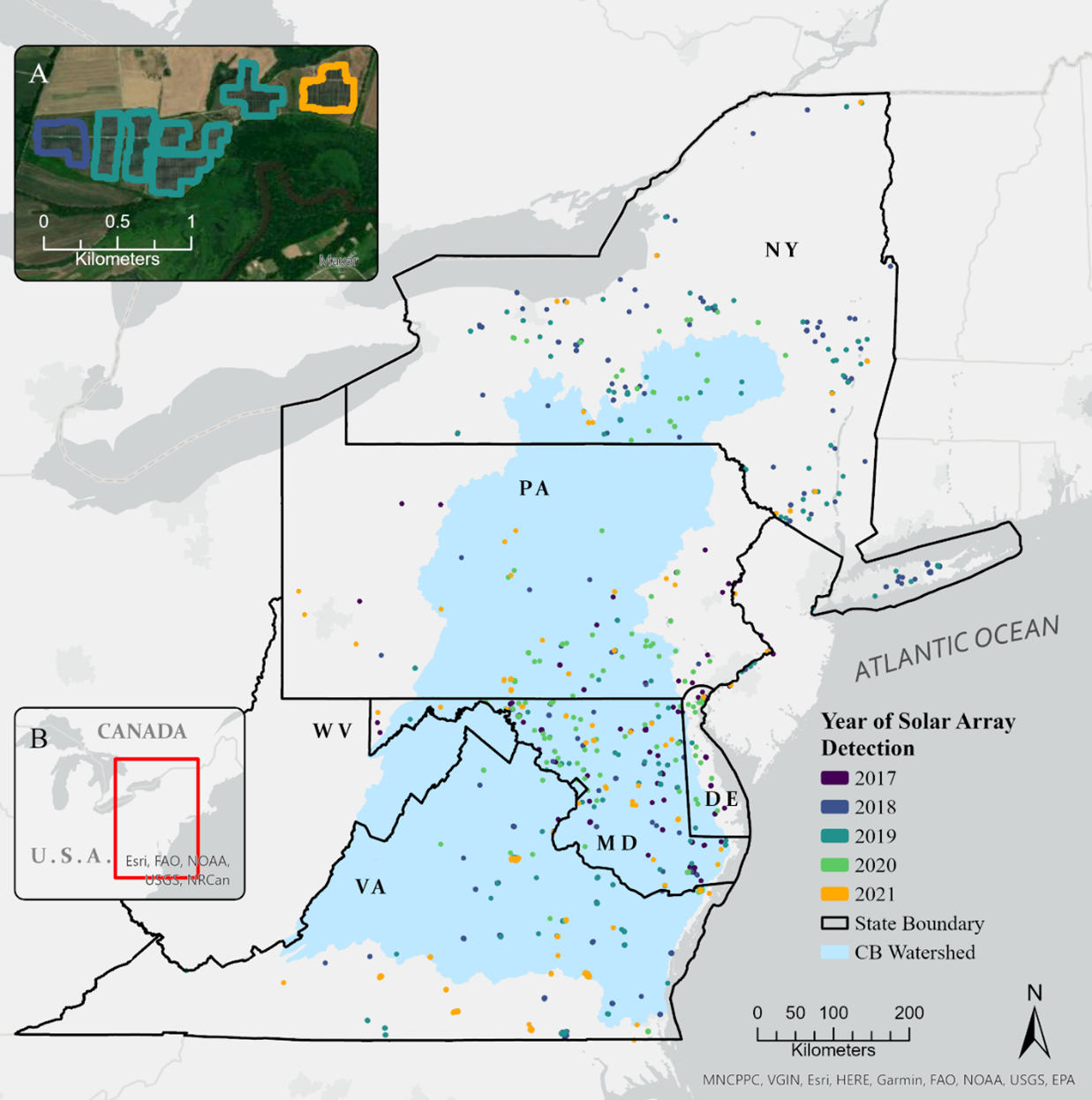Report emphasised significance of laws and regulations that demand consideration of how solar energy projects impact biodiversity and have the potential to aid in land conservation.

Using data from the six states bordering the Chesapeake Bay Watershed, a research team from the Chesapeake Conservatory identified trends in solar buildouts and identified factors influencing siting and land use as well as project impacts on biodiversity.
According to the report, important wildlife habitat has been largely avoided by solar development in the six states. Solar arrays have also been built preferentially on previously farmed land, rarely replacing natural landcover, and in areas with average habitat quality in comparison to other locations.
The science team discovered that solar array construction in the Chesapeake Bay Watershed area avoided natural landcover and arrays were built away from protected areas, in contrast to patterns in the Southwest region of the US where solar projects are built near or within protected areas and replace natural landcover.
The report emphasised the significance of laws and regulations that demand consideration of how solar energy projects impact biodiversity and have the potential to aid in land conservation.
For the examined states, the team used a convolutional neural network to map the footprints of ground-mounted solar arrays that appeared in annual satellite imagery from 2017 to 2021.
In addition, by fitting a binomial-Weibull model to solar time-series data in a hierarchical, Bayesian framework, the researchers were able to quantify the relationship between geospatial covariates and the rate of solar development. In total, 958 solar arrays totaling 52.32 km2 were mapped in 2021.
The study’s findings pinpointed areas where solar buildouts was most likely to occur and offered information that could be applied to “align current siting patterns with conservation priorities” in the area.
The report added that “if wildlife-friendly solar practises are implemented,” “the transition of cultivated areas to solar energy facilities could represent a net benefit to conservation.” Beneficial behaviours were noted by researchers, including fostering local wildlife and native plants, as well as “increases in pollinator abundance, diversity, and richness.”
The study comes to the conclusion that avoiding natural landcover in favour of cultivated cropland offers a chance to develop renewable energy while also enhancing biodiversity. It also acknowledges the possibility of combining solar energy facilities with agriculture to increase the diversity of local species and sequester carbon.
Michael Evans, a senior data scientist at the Conservation Innovation Center (CIC) of the Chesapeake Conservancy, thinks that native vegetation can be kept in place beneath and around solar arrays to help the watershed’s ecosystem services and biodiversity.
Their research is available in the article “Predicting patterns of solar energy buildouts to identify opportunities for biodiversity conservation,” which was released in the journal Biological Conservation.